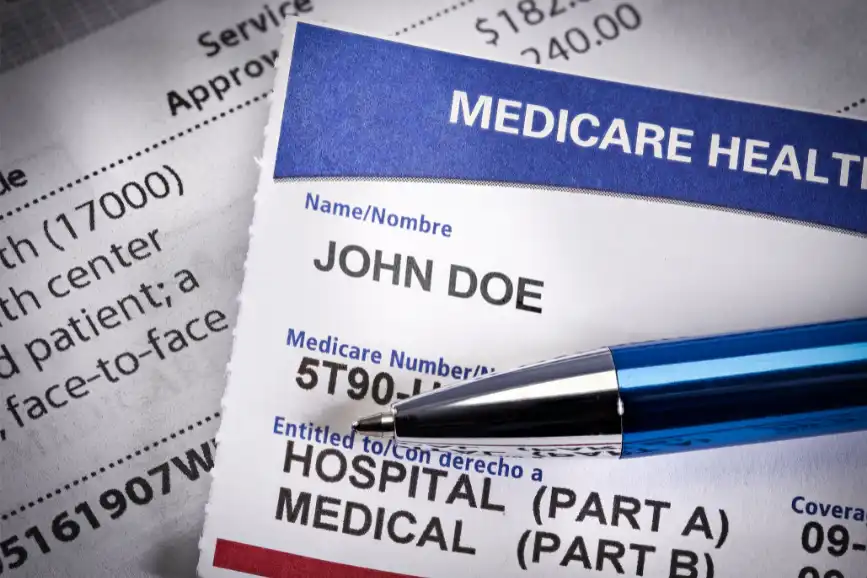What are the changes to Medicare Part A?
Deductible: Medicare Part A (hospital coverage) deductible will cost you $1,600 this year versus $1,556 in 2022. Premiums: Most people qualify for $0 premiums (because you or your spouse paid enough Medicare taxes while working, usually 10 years or more OR you qualify for Medicare before you turn 65). For those that do not qualify for “premium-free Part A,” you will pay slightly more this year.
- $506 per month as opposed to $499 per month in 2022 if you worked and paid Medicare taxes for less than 7.5 years.
- $278 per month as opposed to $274 in 2022 if you paid Medicare taxes for fewer than 10 years, but at least 7.5 years.
Coinsurance (inpatient stay) changes:
Coinsurance is the amount you pay for each day you stay in the hospital. The changes to coinsurance are:
- Days 1-60: You only pay the $1,600 deductible ($1,556 in 2022). No coinsurance is required from you during this time.
- Days 61–90: You pay $400 per day ($389 in 2022).
- Days 91–150: While using your 60 lifetime reserve days, you pay $800 each day ($778 in 2022).
- Days 150+: You pay all fees. In a skilled nursing facility, days 21 through 100 cost $200 per day in 2023 ($194.50 per day in 2022). Like before, the first 20 days are coinsurance-free.
What are the changes to Medicare Part B?
Premiums: The monthly premium for Medicare Part B (medical coverage) will drop from $170.10 in 2022 to $164.90 in 2023. Deductibles: The annual Medicare Part B deductible will drop from $233 in 2022 to $226 in 2023. Plan: For those who have undergone kidney transplants, Medicare will start offering a new Part B coverage in 2023. The coverage of immunosuppressive medications is now extended beyond the preexisting 36-month threshold under the new plan. For people making $97,000 or less per year, the monthly payment is $97.10. If you earn more, the monthly payment increases.
What are the changes to Medicare Advantage (Medicare Part C)?
In 2023, Medicare recipients will typically pay $18 a month for Medicare Advantage, down from $19 in 2022. Additionally, anyone with medication coverage under a Part C (Medicare Advantage) or Part D plan, would be impacted by the following two substantial changes to costs and benefits:
- You won't pay more than $35 per month for some insulin varieties.
- All vaccines that the Advisory Committee on Immunization Practices (ACIP) has recommended, including the shingles vaccine, will be free.
What are the changes to Medicare Part D?
The average monthly cost of a standard Medicare Part D plan will decrease from $32.08 in 2022 to $31.50 in 2023. In contrast, other Part D costs will rise in 2023. The maximum Part D deductible will increase from $480 in 2022 to $505 in 2023. In addition, the catastrophic phase threshold rises from $7,050 in 2022 to $7,400 in 2023.
Are there changes to existing Medicare enrollment periods?
Yes. There are currently two enrollment periods: the initial enrollment period (IEP), which lasts for seven months around your 65th birthday, and the general enrolment period (GEP), which lasts from January to March each year. From 2023, coverage starts the first day of the following month when you sign up the month you turn 65 or during the remainder of the IEP. But in 2022, the coverage was delayed by two to three months for those enrolling at the end of the IEP. Additionally, starting in 2023, coverage begins on the first of the month after enrollment in the GEP; however, in 2022, coverage began on July 1 for anybody who joined the GEP.
Can I use RxLess if I have Medicare?
Yes, absolutely. The discounts listed on rxless.com simply provide discounts on the prescription retail price. You are not disqualified if you have Medicare, commercial insurance, or any other type of insurance. You cannot, however, use the discounts listed on RxLess to offset a copay. If you do not know your insurance cost, provide the free RxLess prescription discount card and your insurance card to the pharmacy and ask for a price comparison. The discounts listed can also provide cost benefits when certain prescriptions are excluded from your insurance, or your prescription prices are higher due to falling into the Medicare coverage gap.

















